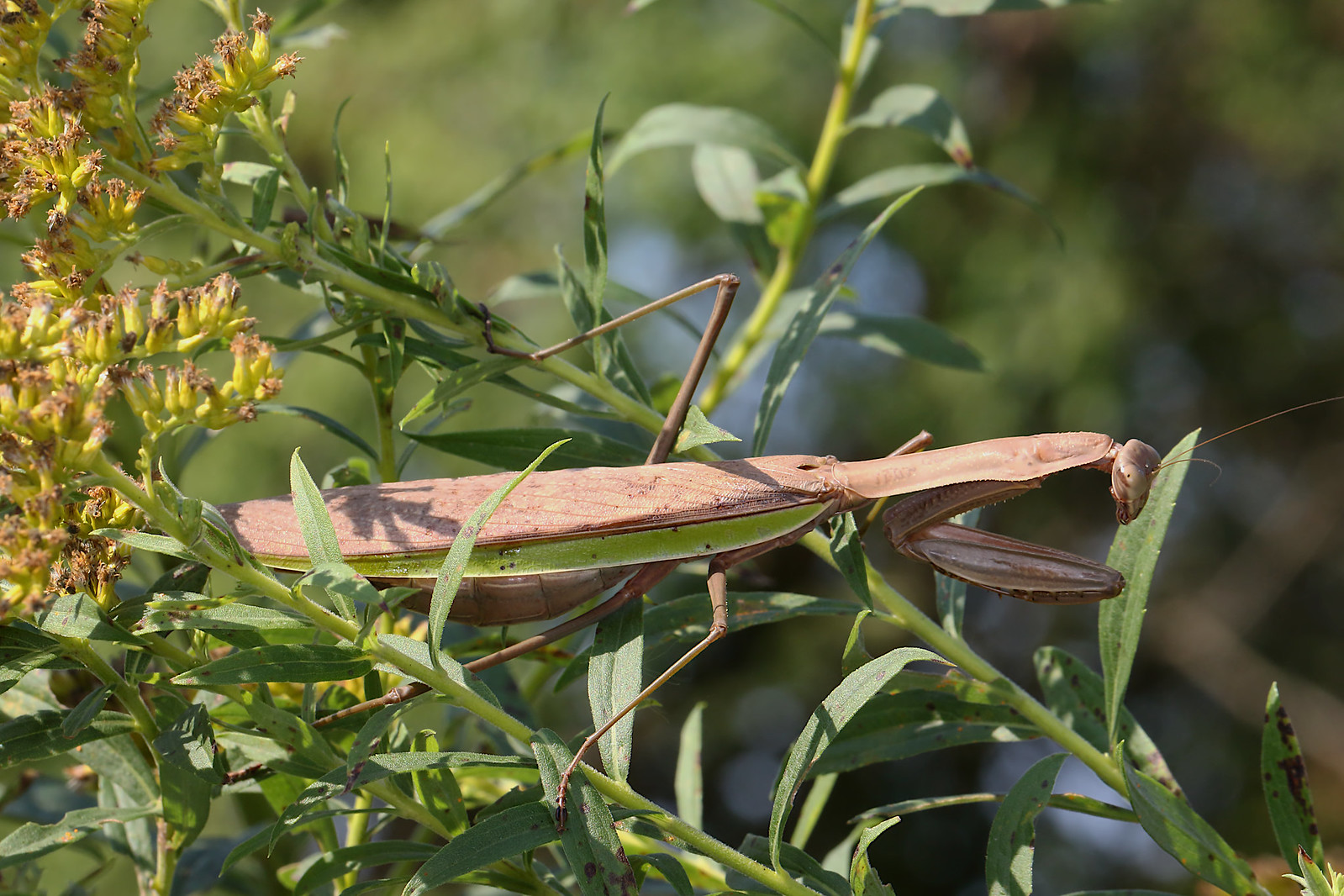 Chinese mantis by Mark Sturtevant, on Flickr
Chinese mantis by Mark Sturtevant, on FlickrSo I took her home for a few days for portraits in my photography studio (which doubles as our dining room table).
 Mantis eyes by day by Mark Sturtevant, on Flickr
Mantis eyes by day by Mark Sturtevant, on FlickrThe black spot on each compound eye is called the 'pseudo pupil', and what is weird about them is they always follow you as the mantis turns its head.
 Mantis eyes by day by Mark Sturtevant, on Flickr
Mantis eyes by day by Mark Sturtevant, on FlickrHow does that work? the pseudo pupil is sort of an optical trick. The compound eye is a bundle of units called ommatidia, and each of these has a lens, pigment cells that reflect away light (giving the eye the color that you see), and deep inside are retina cells that absorb light. You are basically looking down into the ommatidia that are pointing at you, and these look black because they don't let much light out in that direction. As the mantis turns its head, you are no longer looking down those ommatidia so you see light reflected off of their pigment cells. Meanwhile other ommatidia are lined up so you are looking into them, and they turn black for the reasons just stated. Hope that is clear!
But all of this changes at night. At night the pigment cells in the eyes of a praying mantis will migrate away (do they move in deep? Not sure), and this is done to let in more light for night vision. What you see is that the eyes look black. It is a bit startling if you have not seen it before.
 Mantis eyes by night by Mark Sturtevant, on Flickr
Mantis eyes by night by Mark Sturtevant, on Flickr Chinese mantis at night by Mark Sturtevant, on Flickr
Chinese mantis at night by Mark Sturtevant, on FlickrIn the morning hours, the pigment cells migrate back, and the eye color and pseudo pupil returns.
So... Mild mannered mantis by day...
 Mild-mannered mantis by day... by Mark Sturtevant, on Flickr
Mild-mannered mantis by day... by Mark Sturtevant, on FlickrBy night!
